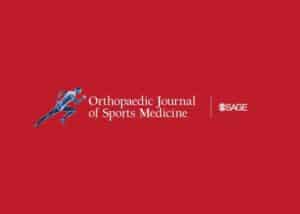
Authors:
Colin P Murphy, Salvatore J Frangiamore, Sandeep Mannava, Anthony Sanchez, Evan Beiter, James M Whalen, Mark D Price, James P Bradley, Robert F LaPrade, Matthew T Provencher
Abstract:
Background: Posterior labral injuries have been recognized as a particularly significant clinical problem in collision and contact athletes.
Purpose: To evaluate the effect that posterior labral tears have on early National Football League (NFL) performance based on position, associated injuries, and operative versus nonoperative management.
Study design: Cohort study; Level of evidence, 3.
Methods: A retrospective review of all participants in the NFL Combine from 2009 to 2015 was performed using medical and imaging reports documented at the combine. Magnetic resonance imaging scans were analyzed for tear location, associated injuries, and evidence of previous surgical interventions. Each player’s NFL draft position, as well as number of games played, number of games started, and snap percentage in his first 2 NFL seasons were collected for performance analysis and were compared with a control group of uninjured counterparts.
Results: Players with posterior labral tears were selected significantly later in the draft than those in the control group (draft position, 171.6 vs 156.1, respectively; P = .017). Although no single individual position was significantly affected by posterior labral tears, linemen (both offensive and defensive) with posterior labral tears were drafted significantly later than those without tears (draft position, 164.0 vs 137.7, respectively; P = .018) and had a significantly lower percentage of snaps in their first NFL season (23.8% vs 27.7%, respectively; P = .014). Players who underwent surgical management before the combine had a significantly higher percentage of snaps in their second NFL season than those who were managed conservatively (31.4% vs 22.3%, respectively; P = .022). None of the concomitant injuries recorded (superior labral anterior-posterior tears, glenoid bone loss, reverse Hill-Sachs lesions, rotator cuff tears, reverse humeral avulsions of the glenohumeral ligament, and posterior labral tears combined with anterior tears) significantly affected the draft position, number of games played, number of games started, or snap percentage for the cohort as a whole or any specific position.
Conclusion: Posterior labral tears did negatively and significantly affect early NFL outcomes for collegiate football players across several different metrics, especially among linemen. While operative management did not produce significantly superior performance in most outcome measures, it may allow for better longevity of the shoulder and warrants further investigation. Concomitant shoulder injuries did not significantly affect early NFL outcomes in this cohort.
For the complete study: Effect of Posterior Glenoid Labral Tears at the NFL Combine on Future NFL Performance